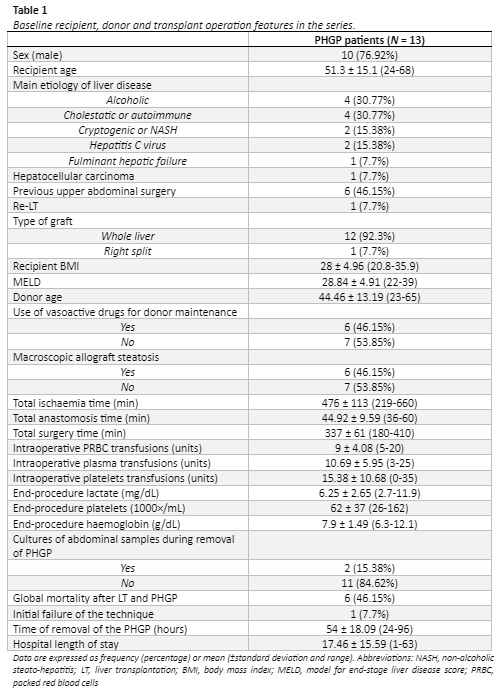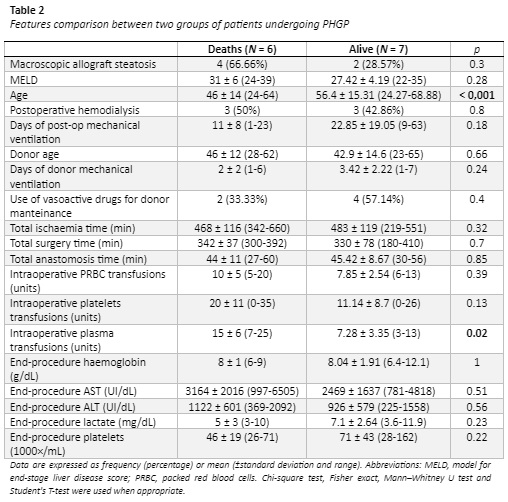
Peri-hepatic gauze packing for the control of haemorrhage during liver transplantation: experience of a high-volume center
Rodrigo Gasque1, María L. Del Bueno1, Magalí Chahdi1, Emilio G. Quiñonez1, Francisco J. Mattera1.
1HPB and liver transplant unit, Hospital de Alta Complejidad "El Cruce", Florencio Varela, Argentina
Introduction: The use of peri-hepatic gauze packing (PHGP) has been rarely reported during liver transplantation (LT). The objective of this technique is to achieve fast control of bleeding while haemodynamic stability is restored and coagulation disorders are fixed. Conditions like baseline cirrhosis-related coagulopathy, intraoperative blood loss, prolonged surgery, anhepatic phase and initial allograft dysfunction may all contribute to persistent bleeding. In some cases, usual means of haemostasis can be ineffective and reiterate attempts at controlling bleeding can be frustrating or even detrimental. Although, PHGP use during LT raises concerns for a potentially increased risk of infection and graft related complications. The aim of our study was to assess the value of PHGP during LT.
Method: We conducted a retrospective and descriptive study. We reviewed the clinical records of 13 orthotopic liver transplantation (OLT) patients undergoing PHGP between a total of 407 patients at the HPB surgery and liver transplant department of the Hospital de Alta Complejidad “El Cruce” between January 2013 and February 2022. Patients and donor’s demographics and intra/postoperative features were analyzed. Continuous data are presented as medians and means and standard deviations. Discrete data are given as counts and percentages. Chi-square test, Fisher exact test, Mann–Whitney U test and Student's T-test were used when appropriate (for categorical and continuous data respectively). Two-sided p value equal or less than 0.05 was considered to indicate statistical significance with a confidence interval of 95%. All analyses were conducted using MedCalc version 20.027 (https://www.medcalc.org/).
Results: Of 407 recipients, 13 were treated with packing for peri-hepatic bleeding (3.19%). One of them required urgent reoperation for ongoing haemorrhage after PHGP. After that, correction of haemodynamic and coagulation parameters was constantly achieved (table 1). 6 patients died (46.15%), none of them related to the PHGP. Patient survival (table 2) was associated with recipient age (p≤0.001) and intraoperative plasma transfusions (p=0.02).
Conclusion: Peri-hepatic gauze packing it’s highly effective in achieving adequate haemostasis, allowing the correction of haemodynamic parameters and underlying disorders. However, it’s associated with relevant morbidity and high mortality. We believe that PHGP is a valuable strategy in the armamentarium of the liver transplant surgeon facing a life-threatening situation like the persistent bleeding during the operation.


